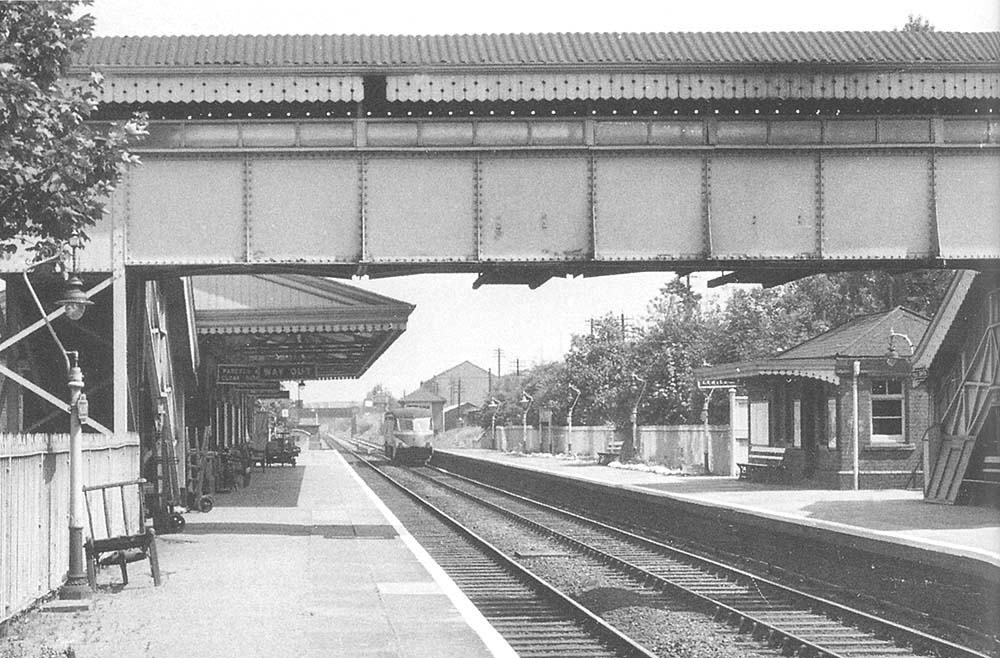|
|
 |
 |
|
GWR Route: North Warwickshire Line
Hall Green Station: gwrhg2927
 |
An ex-GWR Diesel Railcar enters the station on a down local
service to Stratford upon Avon in 1959. In 1933, the GWR introduced the first
of what was to become a very successful series of railcars, which survived in
regular use into the 1960s, when they were replaced by what are described as
British Railway's first generation Diesel Multiple Units. The Railcar seen
above is thought to be from the second batch (No 5 to No 18), as the third and
final batch (No 19 to No 38) having a small window panel at the top of the two
windscreen panels. Built by the Gloucester Railway Carriage and Wagon Company,
they incorporated several improvements to the original design. Sliding doors
replaced the previous opening doors to increase accessibility in busy periods
and deeper windows were installed to improve the view for passengers and
increase the sliding ventilator window size. The front and rear of the railcar
incorporated ventilation slots above the drivers windows together with subtle
changes to the curves at the drivers compartment that slightly cleaned up the
design.
In addition to the changes to the bodywork, the underframes
were modified in light of experience from the previous railcars and the areas
around the bogie pivots and headstocks were strengthened. While No 5 and No 6
retained the part geared/part direct drive of the previous three models, No 7
was provided a gearbox to each of its AEC engines and so gave a greater
starting tractive effort. Delivered in July and August 1935, these first three
railcars were assigned duties in the Oxford and Worcester services working
between London, Hereford and Birmingham. In addition, these first cars were
also used for Sunday evening mystery tours around the Worcester area. Known as
'half-crown' tours these workings travelled down to Gloucester, for example,
via the Vale of Evesham and returning via Great Malvern, and proved very
popular when first introduced. Courtesy of www.greatwestern.org.uk.
 back back

|
|
|
